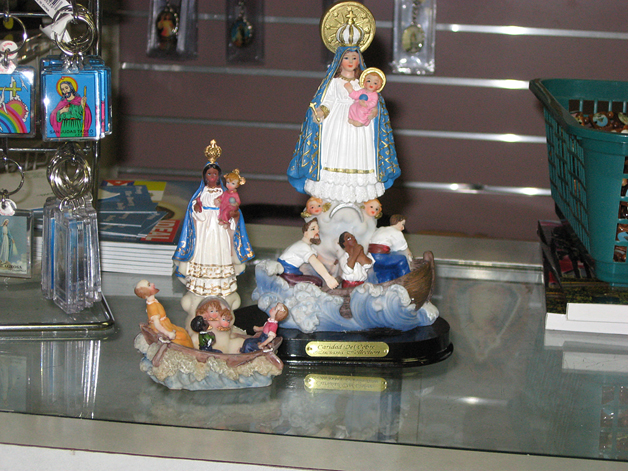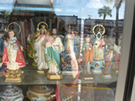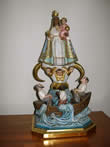
Images for sale in Miami hermitage’s gift shop, 2007.
 
A wider array of religious images for sale in a Miami botánica, 2007 (left); an antique image of the Virgin of Charity, handcarved and painted, early 20th c. (Cuba, restored in Miami, courtesy of Lourdes Martínez-Echazábal), 2008. |
 |
< 9
These cheap (and particularly kitsch) plastic images of Our Lady of Charity are now also mass made in China. They both follow the standard rigid iconography of the Virgin's apparition to the three fishermen in a canoe but there are some significant variations in detail. The two versions differ in their racial depiction of the Virgin figure albeit not in that of the baby Jesus and may be intended for different social sectors among the faithful. The very availability of two racial versions of the image points to the ambiguity--or fluidity--of the Virgin of Charity's racial identification in the social imaginary of the Cuban people. It also speaks to the widespread awareness of the significance of race in the representation and appropriations of this national icon. The version on the left also engages in some intended or unintended gender bending play. Note that the elder white bearded fisherman is clothed in a (female) yellow gown. The portrayal of one of the three seers as racially black is similar in both images although the seers' ages vary (in the original 17th century story there were two adult Indians and a black child on board). Although these effigies are part of the latest generation of images supplying the mass market, there have been finer plastic, ceramic, porcelain, and wood carved specimens available in former times (some of them considered antiques by now). Cheap religious images like these are also avaialable in botánicas.
|
